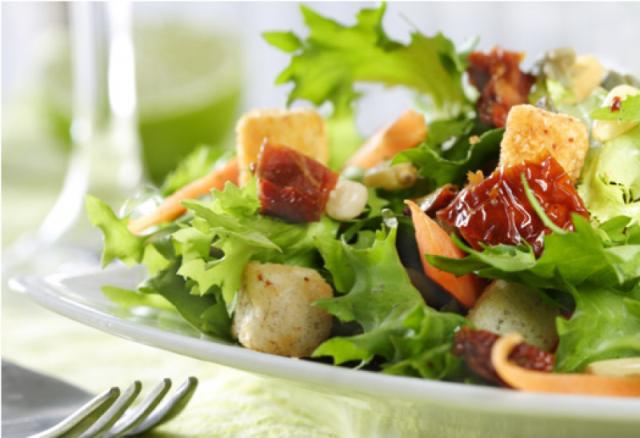Continue from yesterday. Here are another 5 reasons why you should eat like a vegetarian.
6. Safer food
Some of the deadliest food-borne illnesses enter the body via animal foods. "Ground beef is the most likely source of E. Coli 0157:H7. Poultry carry Salmonella and Campylobacter, and the consumption of raw shellfish has caused infection with Vibrio vulnificus," says David Swerdlow of the Centers for Disease Control in Atlanta.
Any raw food - including fruits or vegetables - can carry harmful bacteria. "For example, recent outbreaks of Salmonella have been associated with cantaloupe, tomatoes and alfalfa sprouts," says Swerdlow. But meat, seafood and poultry are the most likely culprits in food-borne illness.
7. The environment
"Our eating habits have a tremendous effect on the planet," says Jenkins. "Eating animals wouldn't harm the environment if it were done on a much smaller scale," explains Alan Durning, Director of North-west Environment Watch in Seattle.
"Modern meat production involves intensive use - and often misuse - of grain, water, energy and grazing areas," says Durning. He cites the following examples:
* Water pollution: the manure and sewage from stockyards, chicken factories, and other feeding facilities can pollute water supplies.
* Air pollution: thirty million tons of methane - a gas that contributes to global warning - comes from manure in sewage ponds or heaps.
* Soil erosion: nearly 40 per cent of the world's - and more than 70 per cent of US - grain production is fed to livestock. For each pound of meat, poultry, eggs and milk we produce, farm fields lose about five pounds of topsoil.
* Water depletion: an estimated half of the grain and hay that's fed to beef cattle is grown on irrigated land. It takes about 390 gallons of water to produce a pound of beef.
* Energy Use: it takes almost ten times more energy to produce and transport livestock than vegetables.
* Overgrazing: about 10 per cent of the arid West of the US has been turned into a desert by livestock. But some of that land couldn't be used for much else. "That's why my argument isn't for vegetarianism, but for people to reduce the consumption of animal products," maintains Durning.
 8. Cost
8. Cost
Sure, you can spend $7.99 a pound on mesclun or other gourmet foods. But from squash to sweet potatoes, most plants are a downright bargain. And the lower price of plants shows up when you eat out. On Chinese, Indian, and most other restaurant menus, the vegetarian selections are usually cheaper than the meat, seafood and poultry.
9. Animal welfare
It's unpleasant to think about, but before we slaughter them, the animals we eat are often raised and transported under inhumane conditions.
10. Taste
The number-one reason for eating a plant-rich diet is that it tastes good. The five vegetables that Americans eat most are French fries, tomatoes (mostly as sauce or ketchup), onions, iceberg lettuce, and other potatoes.
But if most Americans shrink the meat, seafood and poultry on their dinner plates, they - or many of their favourite restaurants - wouldn't know what to replace them with. You have to go to ethnic restaurants to get interesting plant-based dishes. It's no coincidence that ethnic restaurants know how to make vegetable dishes taste good. "Fortunately, there's a wealth of experience around the world because almost all traditional diets are plant-based," says Willet.
Yet many Italian, Mexican and other ethnic restaurants have become so Americanised that their vegetables have been largely replaced by meat and cheese. And that's a shame. In Asian and Mediterranean cuisines, cooking fruits and vegetables is an art form. The Italians don't put tremendous amounts of meat and cheese on pizza, for example. I had a thin-crust pizza at a traditional restaurant recently with no cheese - just fresh basil, tomatoes and garlic. It was totally wonderful.